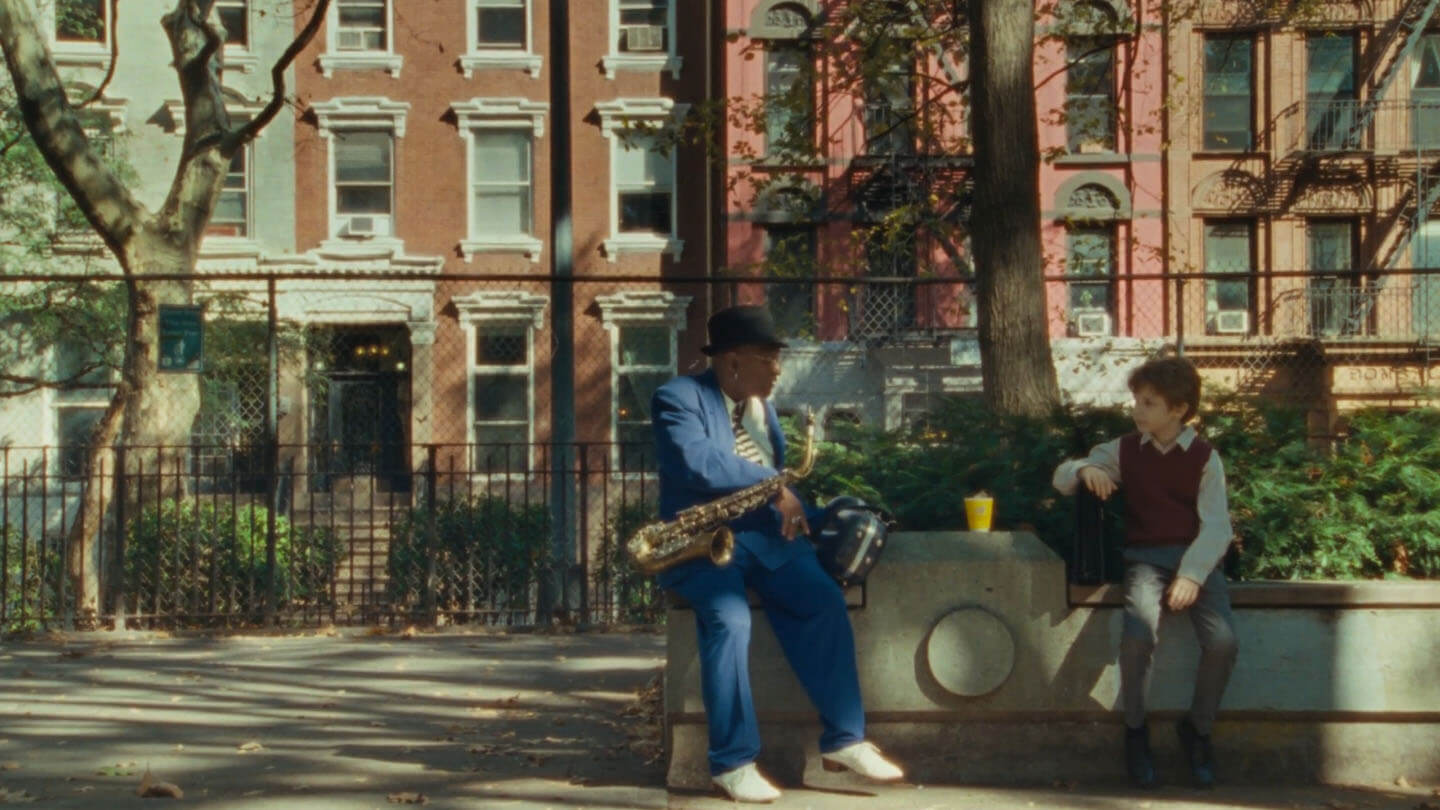Where It’s Beautiful When It Rains is bathed in worthwhile nostalgia. Directed by Harley Chamandy, the film puzzles over large-scale socio-cultural change that has led to an all-pervasive preoccupation with work. If its protagonist, an 8-year-old boy, feels he must immediately get a job, where are the adults in the race?
Christopher (Benjamin Pajak) is a fascinating protagonist. Dressed in a very adult sweater vest and carrying a very professional briefcase, the tiny boy roams the big city in the hope of getting himself hired. Everywhere he goes, despite his adult speech, no one is ready to give him a job. Within the figure of this boy, the film inscribes absurdist comedy, melancholy, and retrospection. The ludicrous sight of a child asking for a job is as amusing as it is brimming with melancholia that is almost separate from the idea of a child needing a job. Perhaps it is Christopher’s desperation, or perhaps it is the thought of the innumerable adults seeking and failing to find a job.
The nostalgia of the film is immediately present in its Super 16 film grain. As Christopher walks around, the film maps New York City through the eyes of a child, similar to and yet so different from the NYC of Home Alone. The attractions (the Bronx Zoo, the ferry, a saxophonist in the park, and so on) are also workplaces, and Christopher can only view them thus. There is no time for fun and merrymaking or taking in the sights without a care in the world.
The film finds its structure through Christopher’s adventures over the course of a day as he interacts with various people and journeys from place to place. The soundscape records the noises of the city: traffic, people, and birds. It is only when the child finds some modicum of childlike joy interacting with animals at the zoo that the film shifts to music. The sounds of “life” as such then take on a subtle sadness: the portrait of gritty life bereft of joy.
Christopher’s youth is contrasted with the old age of a lounge pianist (Constance Cooper), and the film lands squarely on its nostalgia question in the penultimate scene of the film. Christopher’s desperate hunt for a job not only contrasts with (and quietly contributes to) the pianist’s approaching obsolescence, it contrasts contemporary job seekers with their predecessors. To the mildly horrified pianist, childhood is the space and time for play. To Christopher, he cannot waste any time. The question the film seeks to ask about harsh (and rapid) change combines with the desire to find an alternative, as figured in Christopher’s absentee mother: she has left to find a different place, somewhere warm, somewhere where it is beautiful when it rains.
The final scene of Where It’s Beautiful When It Rains is a display of Pajak’s talents and the film’s final recourse to the past in search of answers. A fitting end to a narrative of melancholic determination, the scene shows Christopher’s success, but the questions remain pertinent more than ever.
Watch Where It’s Beautiful When It Rains Short Film
Where It’s Beautiful When It Rains: Work, Success and Escape in These Modern Times
-
Direction
-
Cinematography
-
Screenplay
-
Editing
-
Music
